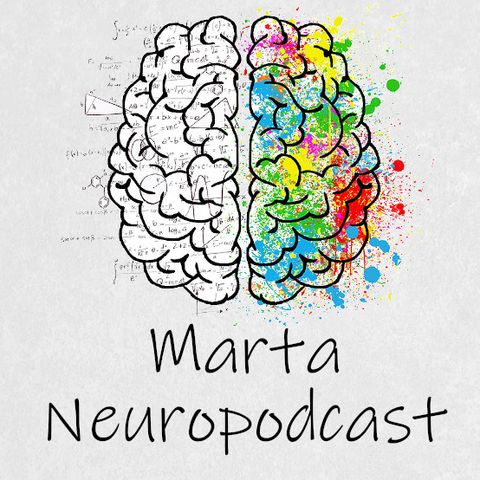17 ENE. 2021 · Benvenuti in questa nuova serie di podcast. Da questa serie, non si parlerà più di super eroi.
Ho deciso di integrare i podcast con un articolo pubblicato su https://scientificult.it/2021/01/17/anoressia-nervosa-fattori-di-rischio-genetici-e-ambientali/
In questa puntata si parlerà di Anoressia Nervosa: ci sono basi genetiche? Quanto è influente l'ambiente? La famiglia? I genitori che ruolo hanno in questa psicopatologia?
Lo scopriamo insieme in questo primo podcast!
Ringrazio tutti gli utenti Instagram che mi seguono e che mi hanno posto domande veramente interessanti sull'argomento, a cui sarà data risposta nei prossimi podcast.
***
Link alle mie pagine:
https://linktr.ee/martaneuroscienze
Se volete, potete sostenermi...
... offrendomi un caffè: https://ko-fi.com/martaneuroscienze
... regalandomi qualcosa dalla wishlist: https://www.amazon.it/hz/wishlist/ls/2FCCE5R3IJGSM?ref_=wl_share
***
Canzoni:
Brain Trust - Wayne Jones - Intro
Sneaky Snitch - Kevin MacLeon
I Am Running Down the Long Hallway of Viewmont Elementary di Chris Zabriskie è un brano autorizzato da Creative Commons Attribution (https://creativecommons.org/licenses/by/4.0/)
Fonte: http://chriszabriskie.com/honor/
Artista: http://chriszabriskie.com/
Warrior Strife – Jingle Punks - finale
***
Bibliografia:
-American Psychiatric Association (2013), Manuale diagnostico e statistico dei disturbi Mentali, Quinta edizione (DSM-5), trad. it. Raffaello Cortina, Milano 2014.
-Bowlby J. (1980) Attachment and loss, New York: Basic Books
-Bulik C.M., Sullivan P.F., Tozzi F., Furberg H., Lichtenstein P., Pedersen N.L (2006) Prevalence, heritability, and prospective risk factors for anorexia nervosa, Arch. Gen. Psychiatry 63:305–312, https://doi.org/10.1001/archpsyc.63.3.305
-Criscuolo M. et al. (2020) Family functioning, Coparenting, and Parents’ ability to Manage Conflict in Adolescent Anorexia Nervosa Subtypes, Families Systems & Health, American Psychological Associations, 38:2, 151-162
-Lauren T. Williams , Cath Wood & Debbie Plath (2020) Parents’ Experiences of Family Therapy for Adolescent Anorexia Nervosa, Australian Social Work, 73:4, 408-419, DOI: 10.1080/0312407X.2019.1702707
-Main M., Goldwyn R. e Hesse E. (2003) Adult attachment classification system version 7.2, Berkeley: University of California
-Mikulincer M. e Shaver P.R. (2007) Attachment in adulthood: structure, dynamics and change, New York: The Guildford Press
-Paolacci et al. (2020) Genetic contributions to the etiology of anorexia nervosa: new perspectives in molecular diagnosis in treatment, Mol Genet Genomic Med, 8:e1244
-Strober M., Freeman R., Lampert C., Diamond J., Kaye W.(2000) Controlled family study of anorexia nervosa and bulimia nervosa: evidence of shared liability and transmission of partial syndromes, Am. J. Psychiatry 157:393–401, https://doi. org/10.1176/appi.ajp.157.3.393
-Tasca G.A. e Balfour L. (2014)Attachment and Eating Disorders: a review of Current Research, Intern Jou of Eating disor, 47:710-717
-Thornton et al.(2018) The Anorexia Nervosa Genetics Initiative (ANGI): Overview and methods, Contemporary Clinical Trials, 74:61-69, https://doi.org/10.1016/j.cct.2018.09.015
-Zipfel S., Giel K.E., Bulik C.M, Hay P., Schmidt U. (2015) Anorexia nervosa: aetiology, assessment, and treatment, Lancet Psychiatry, 2:1099-111


